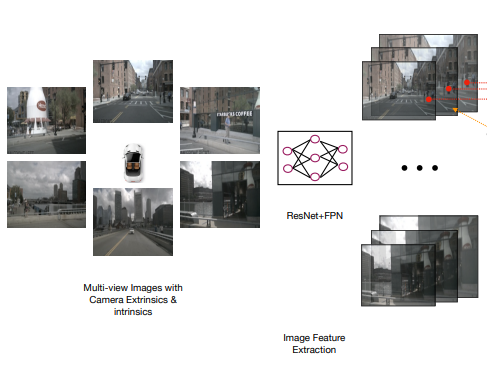[개발] PART 4: Naive Classifier
PART 1: Gender Identifier
Corpus의 영어 이름에서 마지막 ‘몇 글자’를 보고 남자 혹은 여자 이름인지 확인하여 분류한다. Identifying sex through the last ‘few letters’ of the corpus
Naive Bayes Classifier
- 모든 고유한 단어가 텍스트에서 추출 extracting words from texts
- 라벨 확인 checking labels
- 분류 classification
Loading the libraries and dataset
import random
from nltk import NaiveBayesClassifier
from nltk.classify import accuracy as nltk_accuracy
from nltk.corpus import names
import nltk
nltk.download("names")
male_list = [(name, "male") for name in names.words("male.txt")]
female_list = [(name, "female") for name in names.words("female.txt")]
data = (male_list + female_list) # corpus
print(len(male_list))
print(len(female_list))
2943
5001
data[:30]
[('Aamir', 'male'),
('Aaron', 'male'),
('Abbey', 'male'),
('Abbie', 'male'),
('Abbot', 'male'),
('Abbott', 'male'),
('Abby', 'male'),
...
('Adnan', 'male'),
('Adolf', 'male'),
('Adolfo', 'male'),
('Adolph', 'male'),
('Adolphe', 'male')]
# loading the last few words
def extract_features(word, N=2):
last_n_letters = worda[-N:]
return {"feature:":last_n_letters.lower()}
random.seed(5)
random.shuffle(data) # avoid overfitting
input_names = ["Alexander", "Daniellle", "David", "Cheryl"] # sample
num_train = int(0.8*len(data)) # train/test ratio
Training the model
for i in range(1, 6):
print("Number of end letters: ", i)
features = [(extract_features(n, i), gender) for (n, gender) in data]
train_data, test_data = features[:num_train], features[num_train:]
classifier = NaiveBayesClassifier.train(train_data)
accuracy = round(100 * nltk_accuracy(classifier, test_data), 2)
print("Accuracy = " + str(accuracy) + '%')
for name in input_names:
print(name, "===>", classifier.classify(extract_features(name, i)))
Number of end letters: 1
Accuracy = 74.7%
Alexander ===> male
Daniellle ===> female
David ===> male
Cheryl ===> male
Number of end letters: 2
Accuracy = 78.79%
Alexander ===> male
Daniellle ===> female
David ===> male
Cheryl ===> female
...
상기 결과는 단어의 마지막 문자 1, 2개를 기준으로 성별을 분류했을 때 정확도이다. The result represents the accuracy of the classifier that identifies sex based on the last one and two words respectively.
나머지 마지막 문자 3개 이상을 기준으로한 결과값은 편의상 생략하였다. The other outcomes are omitted for convenience.
PART 2: Sentimental Analysis
감성분석(Sentiment Analysis): 텍스트 일부로 감정을 결정하는 과정이다 (좋아, 나뻐). Sentiment Analysis studies how to determine sentiment through part of texts (good, poor).
남자 이름인지 여자 이름인지… / 영화 리뷰가 긍정인지… 부정인지… Man/Woman, Positive/Negative
제품이 좋은지 나쁜지… 여론조사 등등 확장이 가능 Good/Poor, etc.
Loading the libraries
import random
from nltk import NaiveBayesClassifier
from nltk.classify import accuracy as nltk_accuracy
from nltk.corpus import movie_reviews
import nltk
nltk.download("movie_reviews")
fileids_pos = movie_reviews.fileids("pos")
fileids_neg = movie_reviews.fileids("neg")
fileids_pos[:1]
['pos/cv000_29590.txt']
상기 라이브러리의 ‘pos’ 디렉토리의 해당 텍스트에 긍정 단어들이 포함되어 있다. The directory above incldues positive words.
어떤 단어들이 속해있는지 지금 바로 확인해보자. Let’s go check those words now.
movie_reviews.words(fileids=['pos/cv000_29590.txt'])
['films', 'adapted', 'from', 'comic', 'books', 'have', ...]
def extract_features(words):
return dict([ (word, True) for word in words])
features_pos= [ (extract_features(movie_reviews.words(fileids=[f])), "Positive") for f in fileids_pos ]
features_neg= [ (extract_features(movie_reviews.words(fileids=[f])), "Negative") for f in fileids_neg ]
threshold = 0.8 # train/test set ratio
num_pos = int(threshold * len(features_pos))
num_neg = int(threshold * len(features_neg))
features_train = features_pos[:num_pos] + features_neg[:num_neg]
features_test = features_pos[num_pos:] + features_neg[num_neg:]
print("Train Dataset : ", len(features_train))
print("Test Dataset : ", len(features_test))
Train Dataset : 1600
Test Dataset : 400
classifier = NaiveBayesClassifier.train(features_train) # training the model
accuracy = round(100 * nltk_accuracy(classifier, features_test), 2) # prediction
accuracy
73.5
# test sample
input_reviews = [
'The costumes in this movie were great',
'I think the story was terrible and the characters were very weak',
'People say that the director of the movie is amazing',
'This is such an idiotic movie. I will not recommend it to anyone.'
]
from nltk import probability
probabilities = classifier.prob_classify(extract_features(review.split()))
predicted_sentiment = probabilities.max() # 긍부정 우위 선택 pos vs. neg
print("Predicted sentiment :", predicted_sentiment)
print("Probabilities : ", round(probabilities.prob(predicted_sentiment), 2))
Predicted sentiment : Negative
Probabilities : 0.8
긍부정 단어 개수를 계산하여 빈도수가 더 많이 등장한 선택지로 결론내린다. By counting the number of positive and negative words, we conclude with the option that appears more frequently.
결과는 Negative로 부정 단어가 더 많이 포함된 문장이었고, 그 빈도수는 0.8이며 긍정은 0.2이다. The result was a sentence containing more negative words as negative, and the frequency was 0.8 and positive was 0.2.








댓글남기기